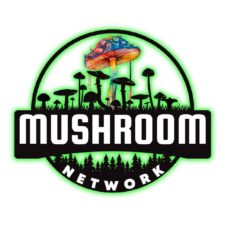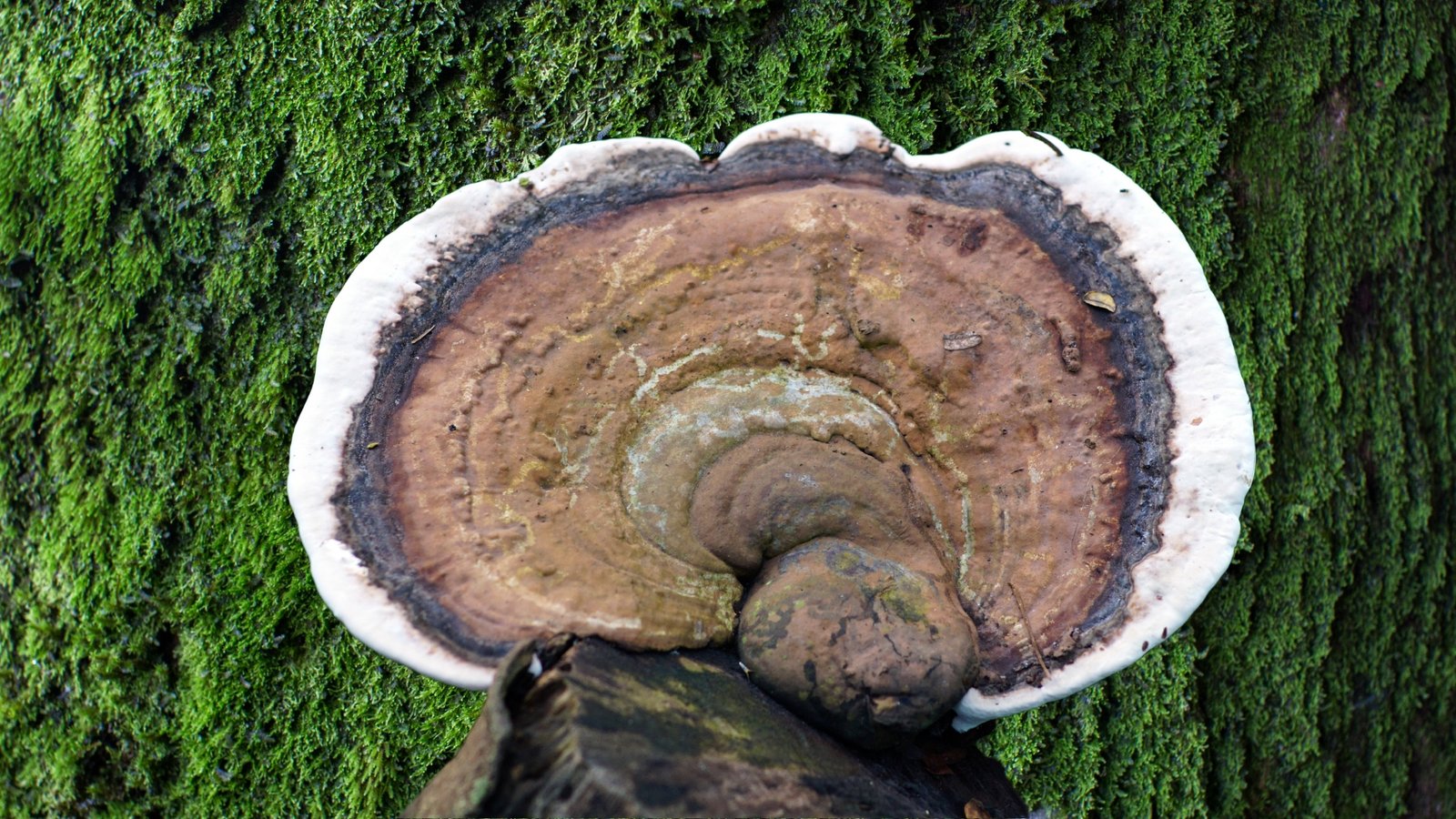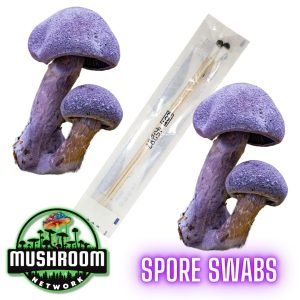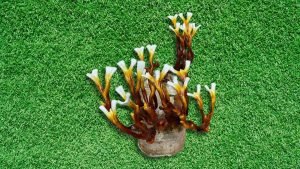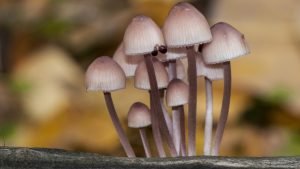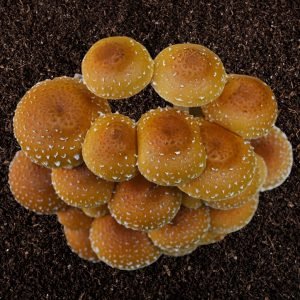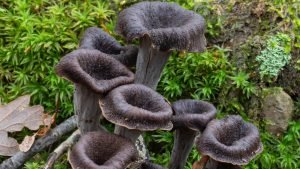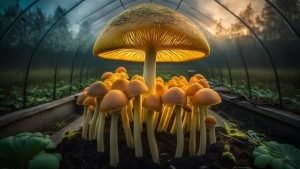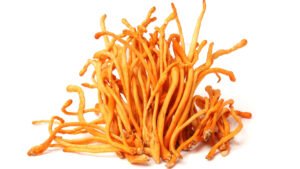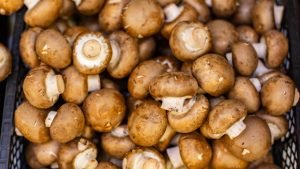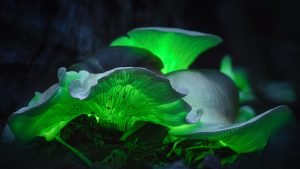Greetings, mycology aficionados and natural art enthusiasts! Today, we’re delving into the fascinating world of Ganoderma Applanatum, commonly known as Artist’s Conk. This mushroom is not only a marvel of nature but also a canvas for creativity.
SCIENTIFIC NAME:
(Ganoderma Applanatum)
COMMON NAME(S):
Artist’s Conk | Artist’s Bracket | Bear Bread
I-NAME:
ARTS
Founding Mycologist/Discovered By:
-Unknown-
If you have information, please help us enrich our database!
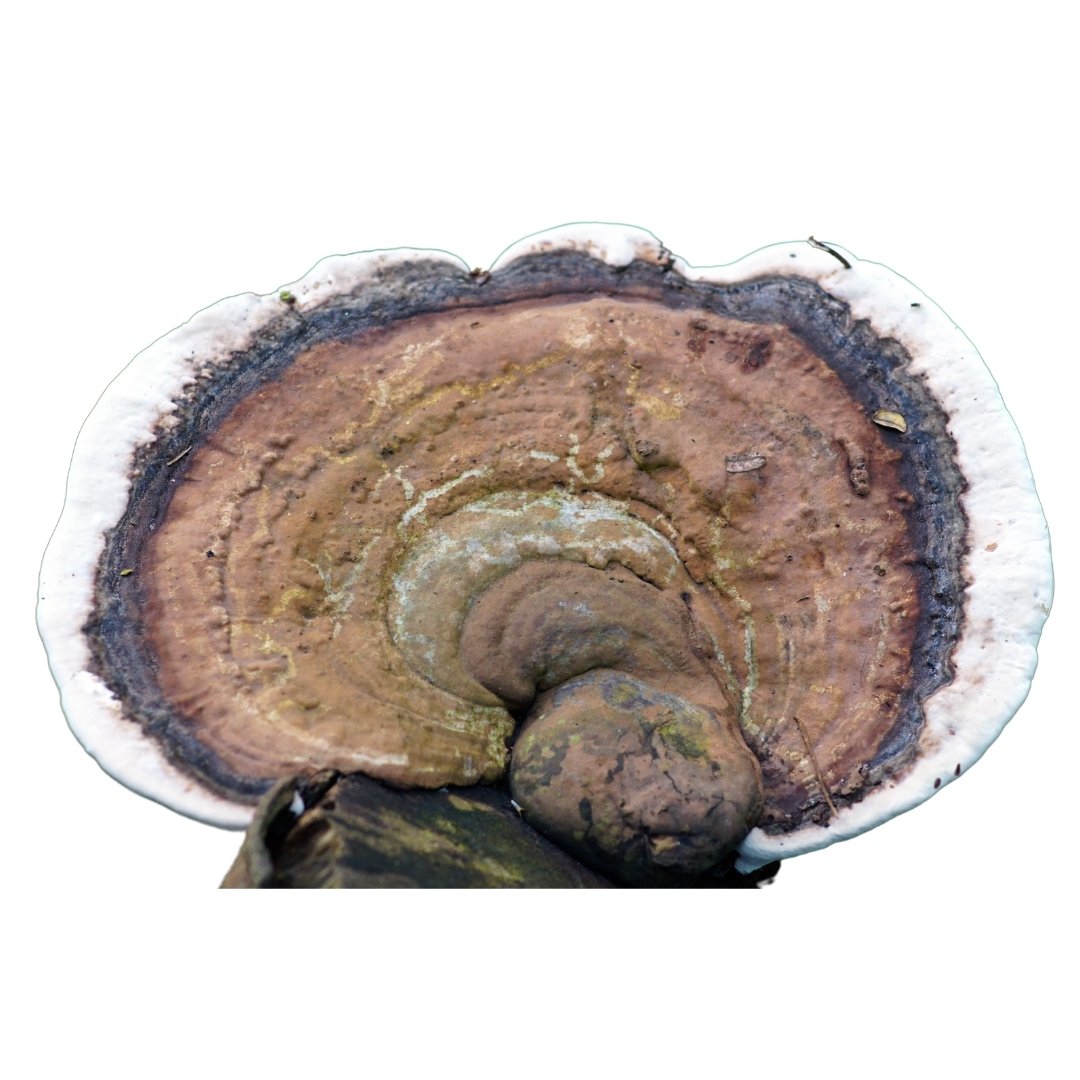
RECOMMENDED TEMPERATURES
Colonizing Temps:65° – 70° | Fruiting Temps:60° – 65° |
SPORE COLOR:
BROWN to DARK BROWN
Behold the Ganoderma Applanatum, a mushroom that doubles as a natural art piece. This perennial bracket fungus is not only an ecological wonder but also a medium for artistic expression.
DESCRIPTION:
This woody, shelf-like fungus displays a grey to brown upper surface, ideal for etching artworks. Its underside is white and pores are minute, offering a smooth canvas for nature-inspired creativity.
INTENDED USES:
- 🍄 Ascetic-Looking: Renowned for its unique appearance and use as a natural canvas for artistic carvings.
- 🔬 Mycology Research: Studied for its role in wood decay and its impact on forest ecosystems.
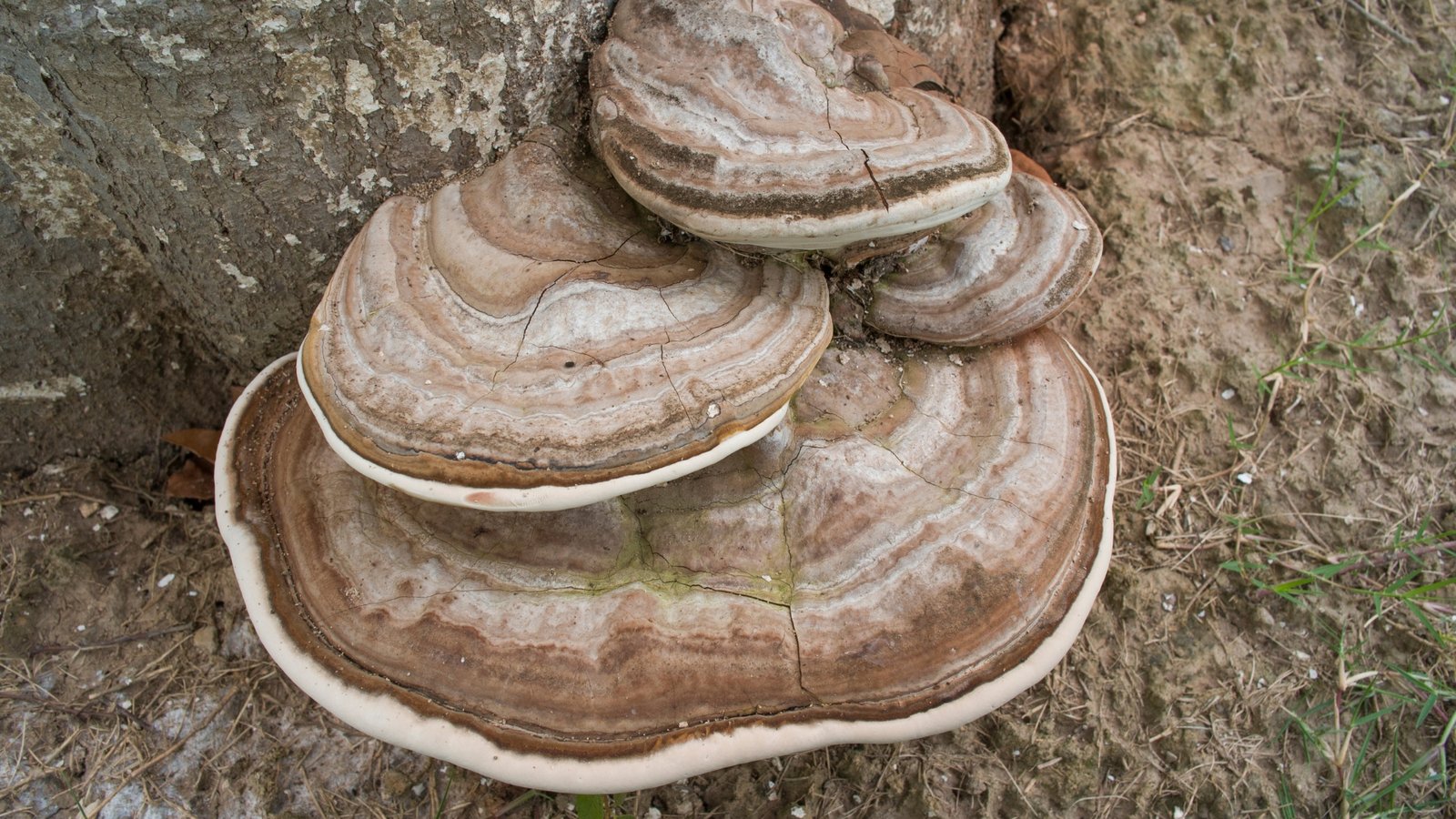
HABITAT AND DISTRIBUTION:
Commonly found on dead or dying hardwood trees, particularly in temperate forests across North America, Europe, and Asia.
ECOLOGICAL ROLE:
Serves as a decomposer, breaking down lignin in wood, thus playing a crucial role in nutrient cycling within forest ecosystems.
GROWTH AND CULTIVATION:
While not typically cultivated due to its wood-decaying nature, it thrives in natural woodland settings, particularly on old or fallen trees.
HISTORICAL & CULTURAL INFO:
Long admired by artists and naturalists, the Artist’s Conk has been used as a canvas for intricate carvings, with a history that intertwines art and mycology.
GENETIC LINEAGE/HISTORY:
Belongs to the Ganodermataceae family, known for its medicinal and ecological significance. Its lineage reveals a long-standing relationship with hardwood forests.
CHEMICAL COMPOSITION:
Contains compounds typical of the Ganoderma genus, known for their potential medicinal properties, including polysaccharides and triterpenoids.
MEDICAL PROPERTIES (if applicable):
While primarily known for its artistic and ecological importance, ongoing research explores its potential medicinal properties shared with other Ganoderma species.
CULINARY USES (if applicable):
Due to its tough, woody texture, Artist’s Conk is not used in culinary applications.
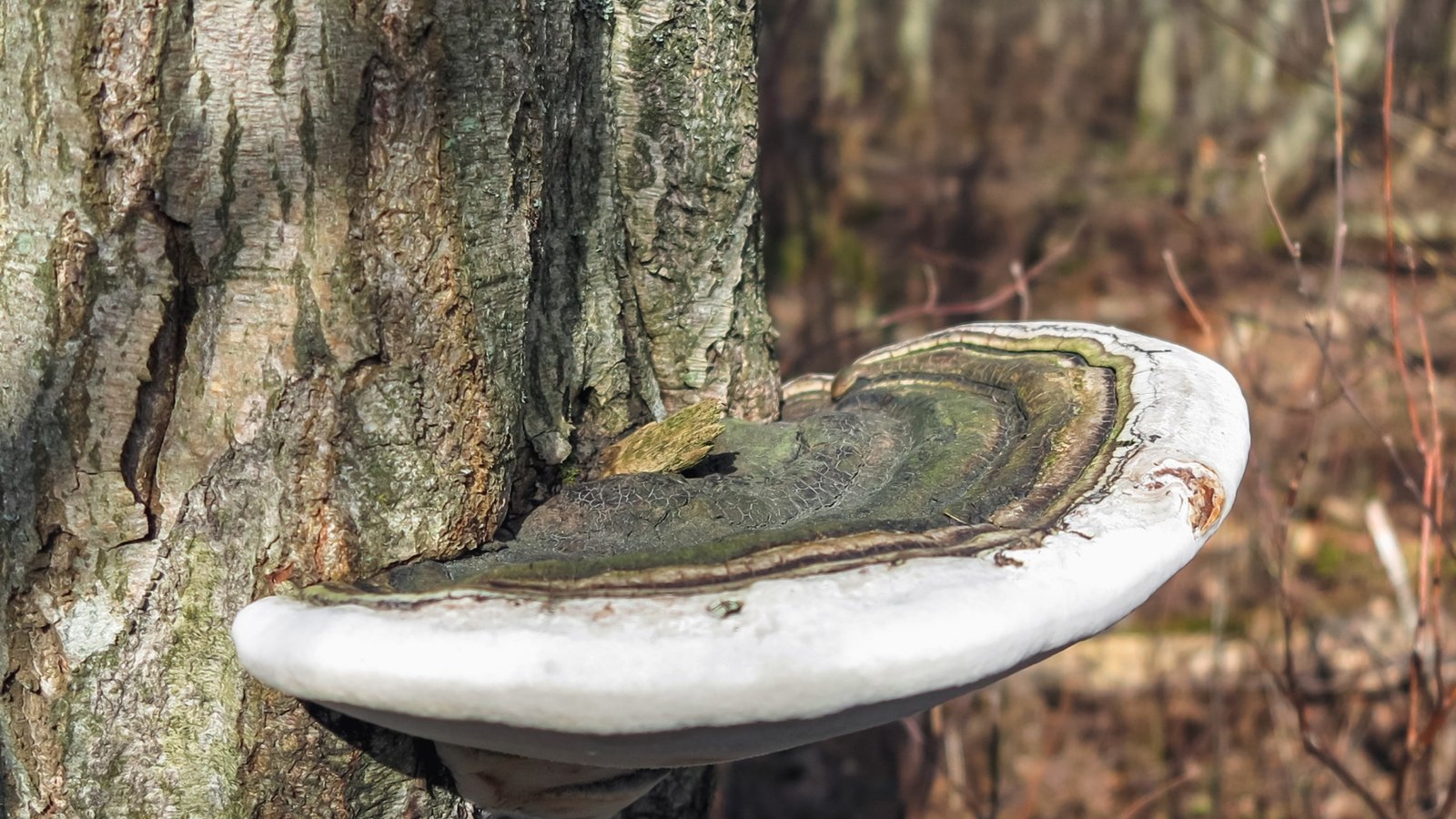
CAUTIONS & WARNINGS:
Artist’s Conk is not edible. Its value lies in its ecological role and use as a medium for artistic expression.
FINAL CONSIDERATIONS:
As we conclude, remember that the Artist’s Conk is a testament to nature’s beauty and utility. Explore our 🍄 Marketplace to discover more about this natural art medium and its ecological significance.
Don’t forget to check out the 🍄 Mushroom Network’s Marketplace to see what’s available. But hurry, our shelves are constantly evolving, and you wouldn’t want to miss out on this wonderful mushroom. Join our growing network of Patrons, Genetics, and Mycologist Vendors only on the 🍄 Mushroom Network!
FAQs:
No, it is inedible due to its tough texture.
Its underside can be etched to create lasting natural artwork.
On dead or dying hardwood trees, especially in temperate forests.
While not commonly used for medicinal purposes, it may share properties with other Ganoderma species.
It plays a vital role in decomposing wood and recycling nutrients in forests.
Related Articles:
Artist’s Conk/Bracket (Ganoderma Applanatum)
Greetings, mycology aficionados and natural art enthusiasts! Today, we’re delving into the fascinating world of...
Read More...Other Mushroom Species To Research:
Antler Reishi (Ganoderma Multipileum)
Ahoy, Patrons and spore enthusiasts! Welcome to the scientific soiree of the Antler Reishi, where...
Read More...Bleeding Fairy Helmet (Mycena Haematopus)
Greetings, fungal aficionados and curious minds! Today, we delve into the enigmatic world of Mycena...
Read More...Chestnut (Pholiota Adiposa)
SCIENTIFIC NAME: (Pholiota Adiposa) COMMON NAME(S): Chestnut Mushroom | Shimeji | Chestnut Bolete | Chestnut...
Read More...Black Trumpet (Craterellus Cinereus)
Greetings, fungal aficionados and nature lovers! Today, we embark on a fascinating exploration of Craterellus...
Read More...Other Recommended Reads:
A Beginner’s Guide to Home Mushroom Cultivation: From Setup to Harvest
This detailed and captivating article provides a comprehensive and step-by-step guide for beginners interested in...
Read More...Cordyceps (Cordyceps Militaris)
Welcome, fellow fungi enthusiasts! Today, we’re diving into the fascinating world of Cordyceps Militaris, a...
Read More...The Golden Princess: Breeding and Cultivating Agaricus Subrufescens
Welcome to the captivating world of mushroom cultivation, where nature’s treasures unravel in enchanting forms....
Read More...The Lure of Luminosity: Understanding Bioluminescent Fungi
Nature has always held fascinating secrets, and the realm of mycology is no exception. Among...
Read More...Whoa there, Spore Sport! 🍄 Looks like you’re not logged in yet. Don’t you know what you’re missing? MYCO-CREDITS! Imagine all the fungal fun you could have. It’s like finding a Morel in May and not picking it. Tragic, right? Log In or Become a Myco-Patron and start racking up those credits. It’s more rewarding than finding a mushroom in your backyard! 🌟🏡
